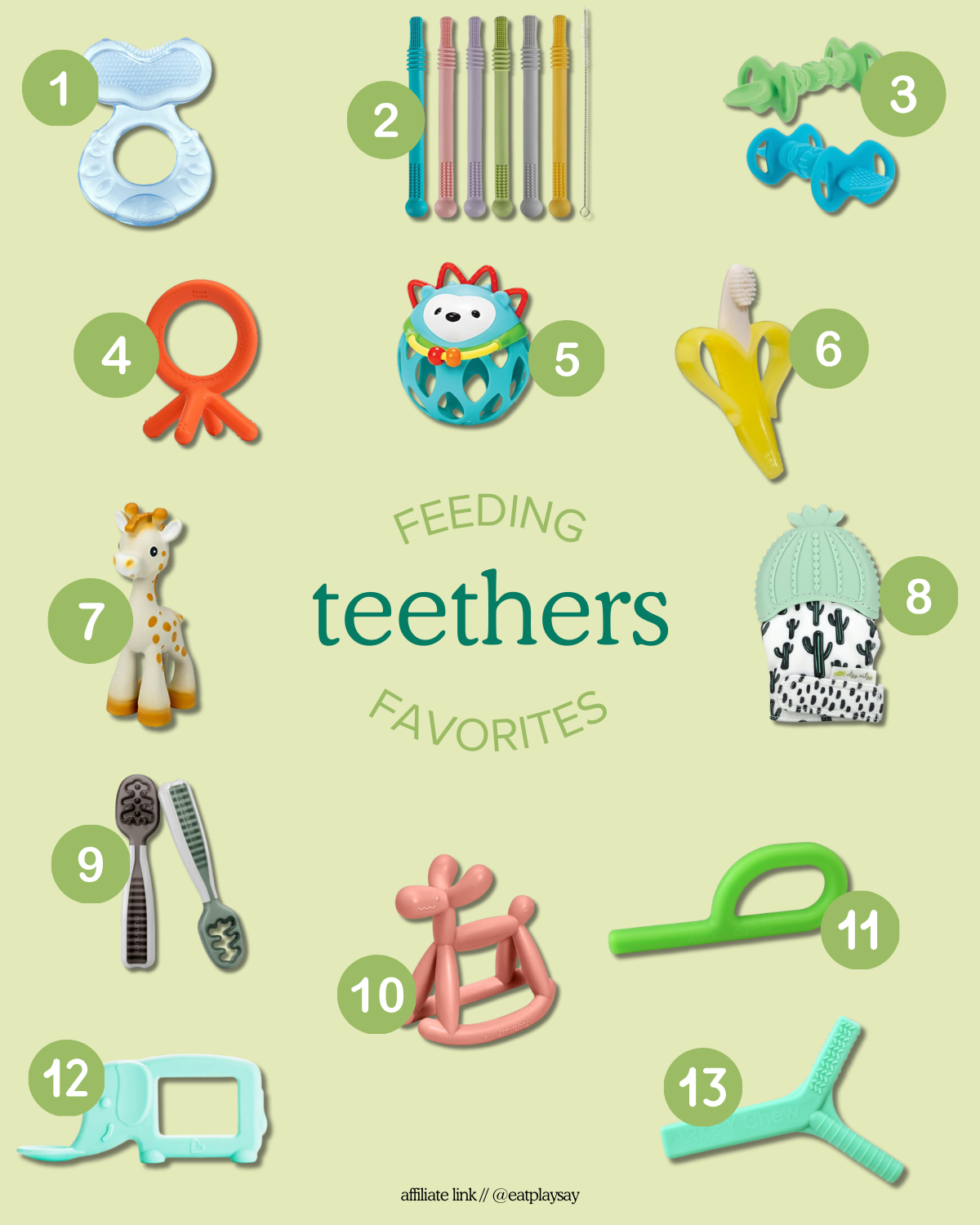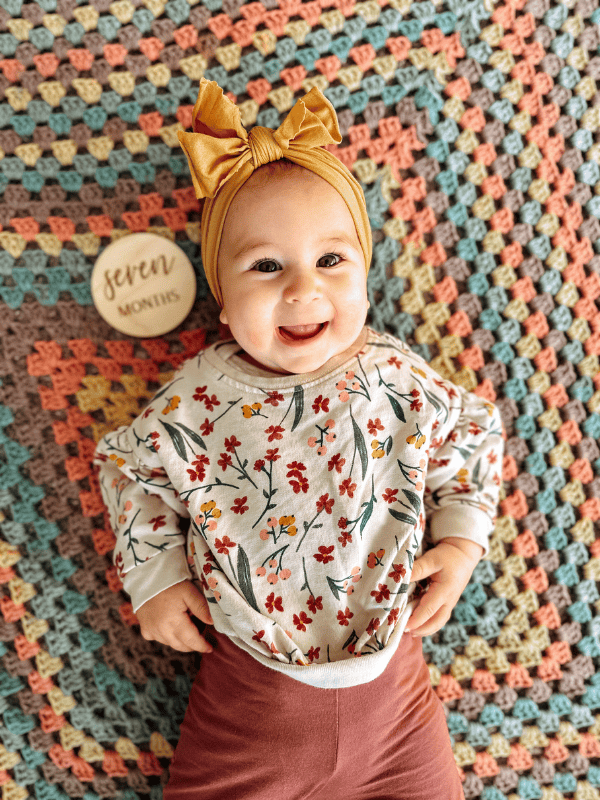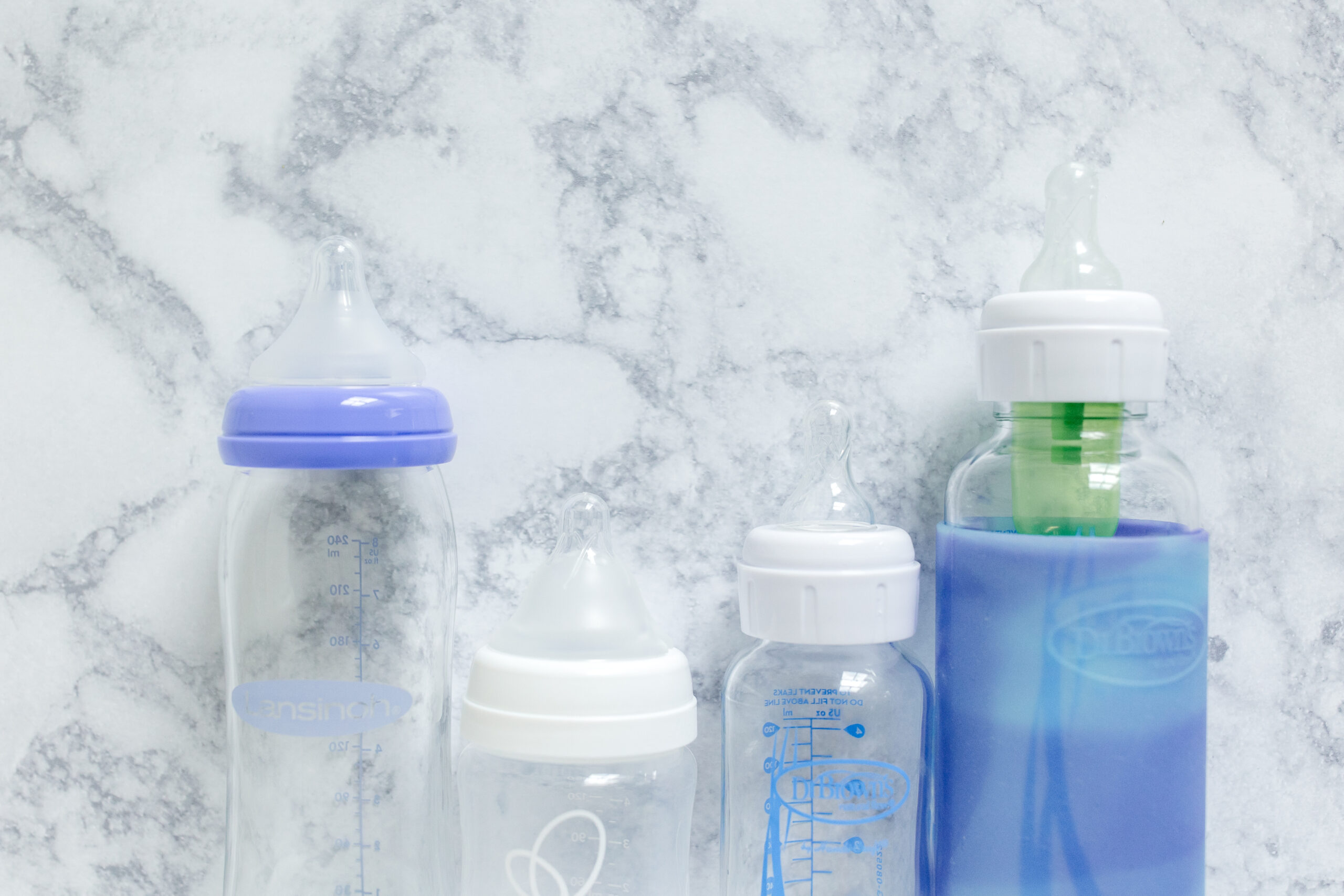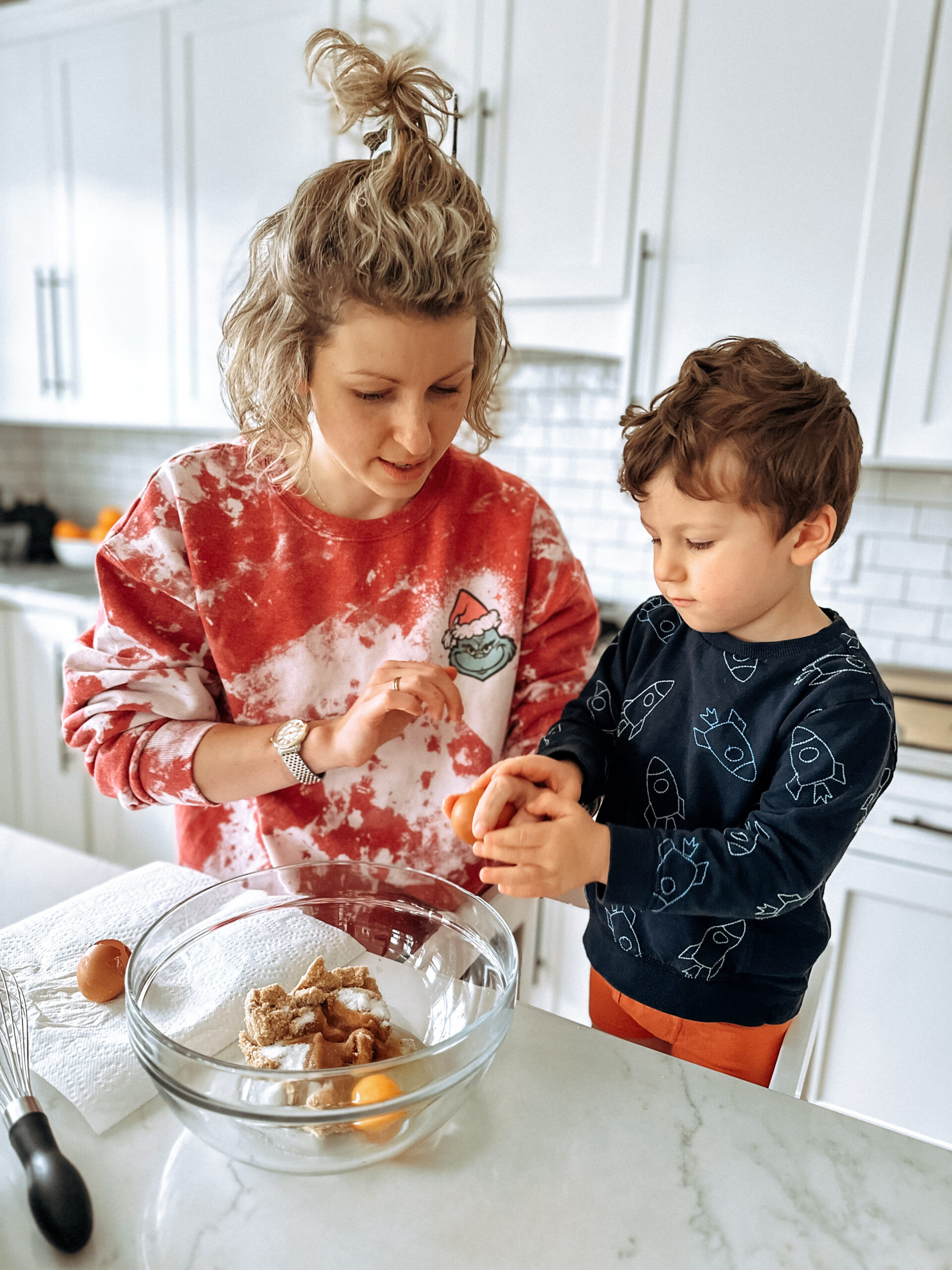This page contains affiliate links. We will receive a commission on qualifying purchases using these links.
Parents are usually surprised to find out that signs of “teething” can begin as early as 10-12 weeks of age. As feeding specialists, teething is something we educate about often. Let’s dive into the signs of teething and what parents can do to help!
Signs of Teething in Babies
One of the first signs of teething is actually drooling. When babies start to bring their hands to their mouths around 3-4 months, the salivary glands are naturally activated. So, baby starts to drool more! An increase in drooling is a sign of teething, but it’s not always immediately followed by teeth popping through the gums.
Babies may also be cranky, seem to have more saliva or mucous than normal, and just seem “off” when they are starting to sprout teeth! Parents can usually see little “bumps” or buds at the gumline indicating that teeth are coming soon! The gumline turns white where teeth are about to pop through. And baby may be chomping on anything and everything when they are teething.
When Do Babies Get Teeth?
These early developmental “mouthing” milestones can make parents believe that teeth are coming as early as 3-4 months. But the truth is that it’s normal for babies to get their first tooth anywhere from a 5-6 months old to over a year old! So they can be “teething” for quite a while with no teeth actually coming through! This can be frustating, especially if your little one seems very impacted by teething.
What To Do If You Think Baby is Teething
If your baby is chomping on everything, but it feels like you’re waiting forever for a tooth to pop through, don’t worry. All of that chomping and biting is doing your baby good! It is strengthening their jaw and preparing them for managing solid foods.
Let them chomp on the silicone ends of toys and books and teethers. If they are eating solids, offer them cool foods like yogurt and cold fruits, as that may relieve some discomfort. You can also offer them chilled teethers by putting them in the fridge. Don’t put them in the freezer though- extremely cold temperatures can be very shocking to baby’s mouth. They may get more upset if the temperature is too cold!
When To Use Teethers
Teethers are AMAZING! The benefits of using them are infinite, and we recommend using them way before the first tooth pops through. The best time to introduce is right around 3 months of age. This is also when those first signs of teething usually occur, too!
From a developmental standpoint, at 3-4 months baby has likely started reaching and grasping (with support). So they are ready to start holding onto items and bring them to their mouth!
When babies are born, their mouth is very “unorganized.” This is why sucking on a pacifier or nursing is very soothing and regulating to them. Overtime their mouth becomes more organized through oral exploration.
During the first year, we want baby’s mouth to experience different textures during play and meals to help regulate their oral sensory system. So, teethers are an excellent way to do that! Start to offer around 3 months of age and continue into toddlerhood!
Teethers are especially helpful between 3-6 months of age because they help move the gag reflex back. They help practice the motor plan for chewing and support mature oral motor development. And they are great for baby’s oral–sensory development.
Essentially, baby is prepping for solids with teethers! They can help introduce textures to baby before they are introduced to textured foods. Pretty cool, huh?
Baby’s First Teether
Start with one that is thicker and not too stick-like. Baby’s gag reflex is still very forward in the mouth early on. Some gagging can be expected as baby navigates this new texture.
Baby’s fine motor skills are still developing, so they don’t have the best control of how far to put things in their mouth. Baby will likely need some help with holding the teether and getting it to their mouth. So, you can offer assistance as they need it!
This one is the Eat Play Say top pick for baby’s first teether! This one is my favorite one for parents to start with around 3 months.
You can pop it in the dishwasher or sterilizer, and it has little bristles for some texture. Plus, it can’t go too far back in baby’s mouth and comes in a variety of colors!
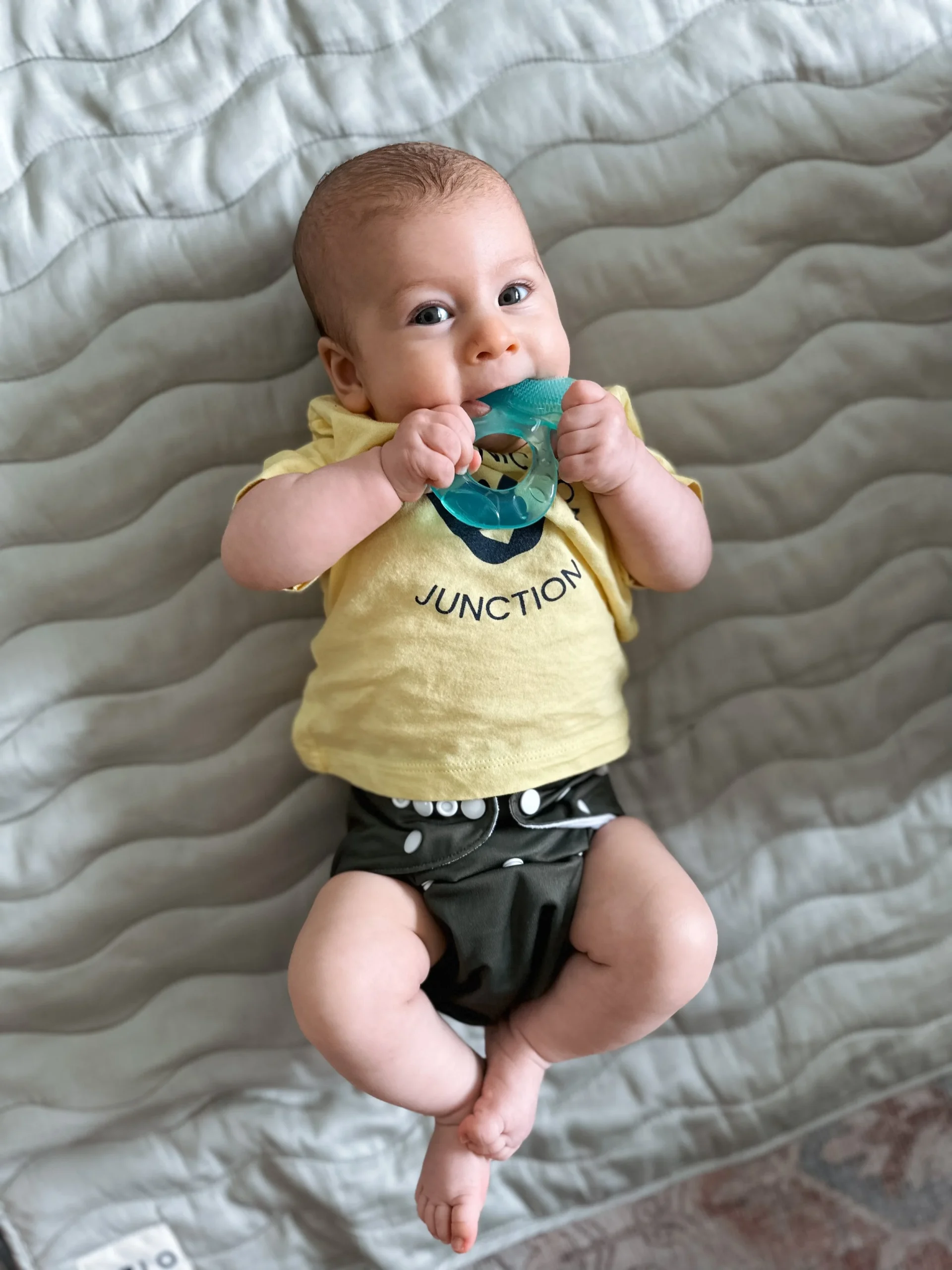
Favorite Teethers for Baby
Once baby does well with those types of thicker teethers that are easier to hold, moving to stick-like teethers is recommended.
These help move the gag reflex back, which helps prepare baby for solids. They also help baby practice the motor plan of self-feeding. You can even dip them in baby’s favorite food in the high chair when they take their first bites!
You can start with HOLLOW tubes for chomping. But make sure to move to thicker, more resistive stick-shaped teethers as baby nears 5 months old.
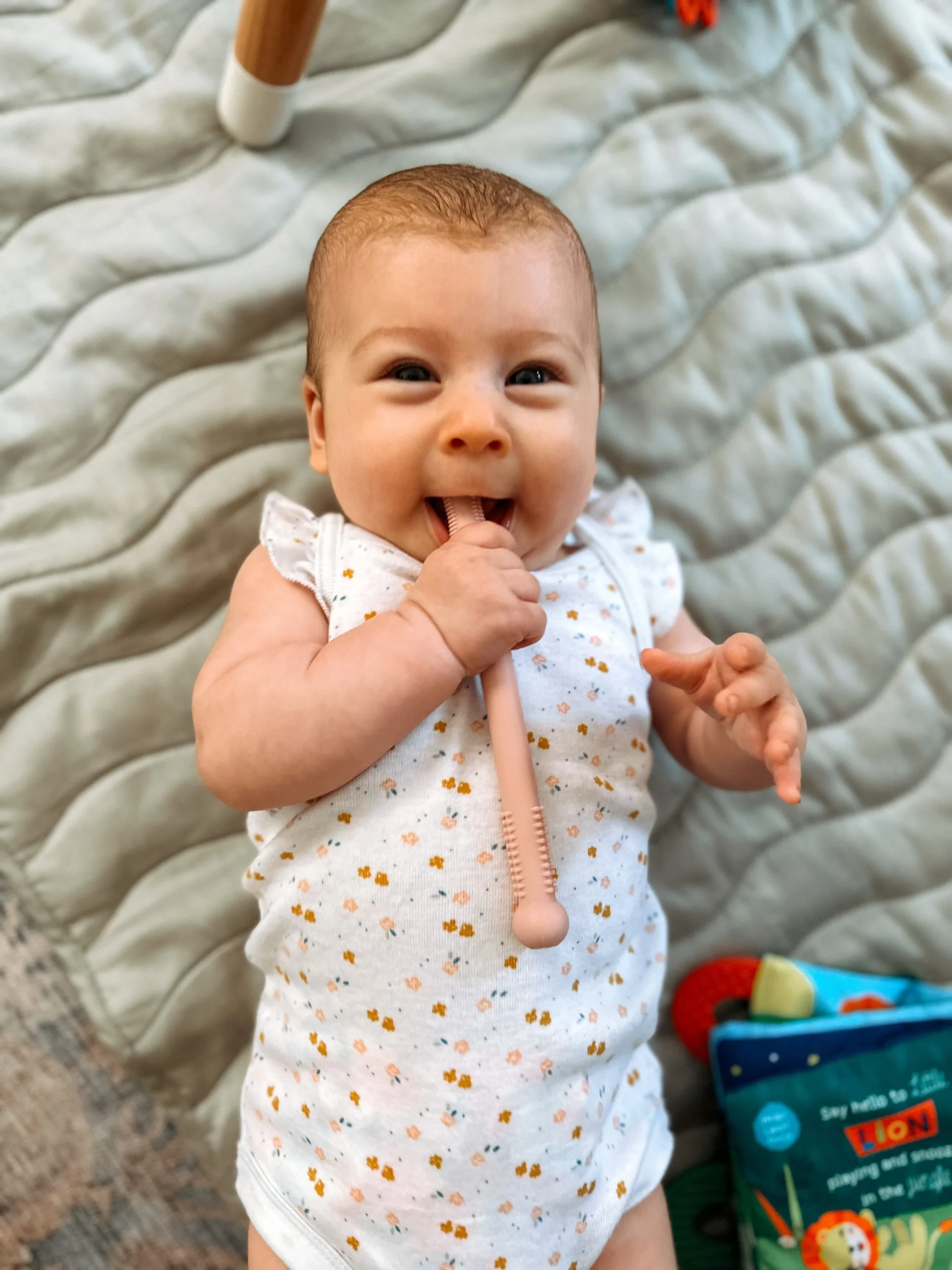
Teethers for 6 Month Olds
When it’s time to start solids, it’s really time to start chomping!! This teether is a great option for littles to practice the motor planning for self-feeding and increase jaw strength.
Once they can handle a teether like the Nuby or the hollow sticks, this is a great next step. Still easy to hold, can be put in the dishwasher or sterilizer, and has SHORT sticks so baby doesn’t overly gag themselves!

Baby’s First Toothbrush
Teethers can also help with toothbrushing. Babies typically get their first tooth between 6-12 months. So, it is important to start brushing those teeth as soon as you see them! Brush in gentle circles with water to start and then add infant toothpaste once they are comfortable with soft bristles in their mouth. Be sure to see a dentist within 6 months of that first tooth or by the first birthday.
Here is a great training toothbrush that can double as a teether.
Why Is It Important to Offer a Teether?
We know that littles who did NOT put toys and items in their mouth in infancy are at higher risk for oral sensitivities when starting solids. Remember, their mouth is very unorganized in early infancy!
Babies are meant to put things in their mouth because that is how they EXPLORE the world. Crinkle books with teething corners, silicone rattles, and other soft baby items are also great for mouthing!
Have teethers nearby or on a pacifier clip once you start to introduce. If they reach to put things in their mouth, encourage it as long as it is safe and they are supervised! I know that germs can be scary, but remember that putting items in baby’s mouth is normal and should be encouraged.
Replace the Pacifier with a Teether
Yep, you heard me right! Around 3 months of age, try to minimize use of a pacifier during the day and try to decrease reliance on it for sleep if you can.
The sucking reflex is naturally starting to integrate at this age. To support baby’s maturing oral motor skills, we want to encourage more chomping and less sucking. (And we want baby’s mouth to be closed at rest with the tongue up under the hard palate as much as we can! If you’re an Instagram follower, you know I say this allllll the time!)
Try to completely eliminate use of the pacifier if you can by 6 months of age. (That’s when that suckling reflex is usually completely gone). A goof stretch goal is elimination by a year.
After 12 months of age, we know that prolonged pacifier use or finger sucking can change the shape of the mouth.
If you want to learn more about weaning the pacifier and thumb sucking, check out our blog about pacifiers!
Do Toddlers Use Teethers?
Yep!
Continuing to offer thicker, resistive and stick-like teethers after 6 months and into toddlerhood is recommended.
Continued use strengthens the jaw, helps continue to move the gag reflex back (which fully moves back around a year of life!), and can help with teething pain as baby’s teeth continue to pop through.
Again, replacing pacifiers with teethers around the 6 month mark is a great way for baby to continue to receive oral input without prolonging an immature suckling pattern. If you want some information about pacifier weaning or thumb sucking, head to this blog.
Favorite Teethers for Babies & Toddlers
You bet we have an extensive breakdown of all of our favorite teethers, all in one place!
It’s one of our top-view pages in our Favorites tab! Check out what teethers (and yep, you’re seeing right- some silicone spoons) we recommend and how to best use them right here!
